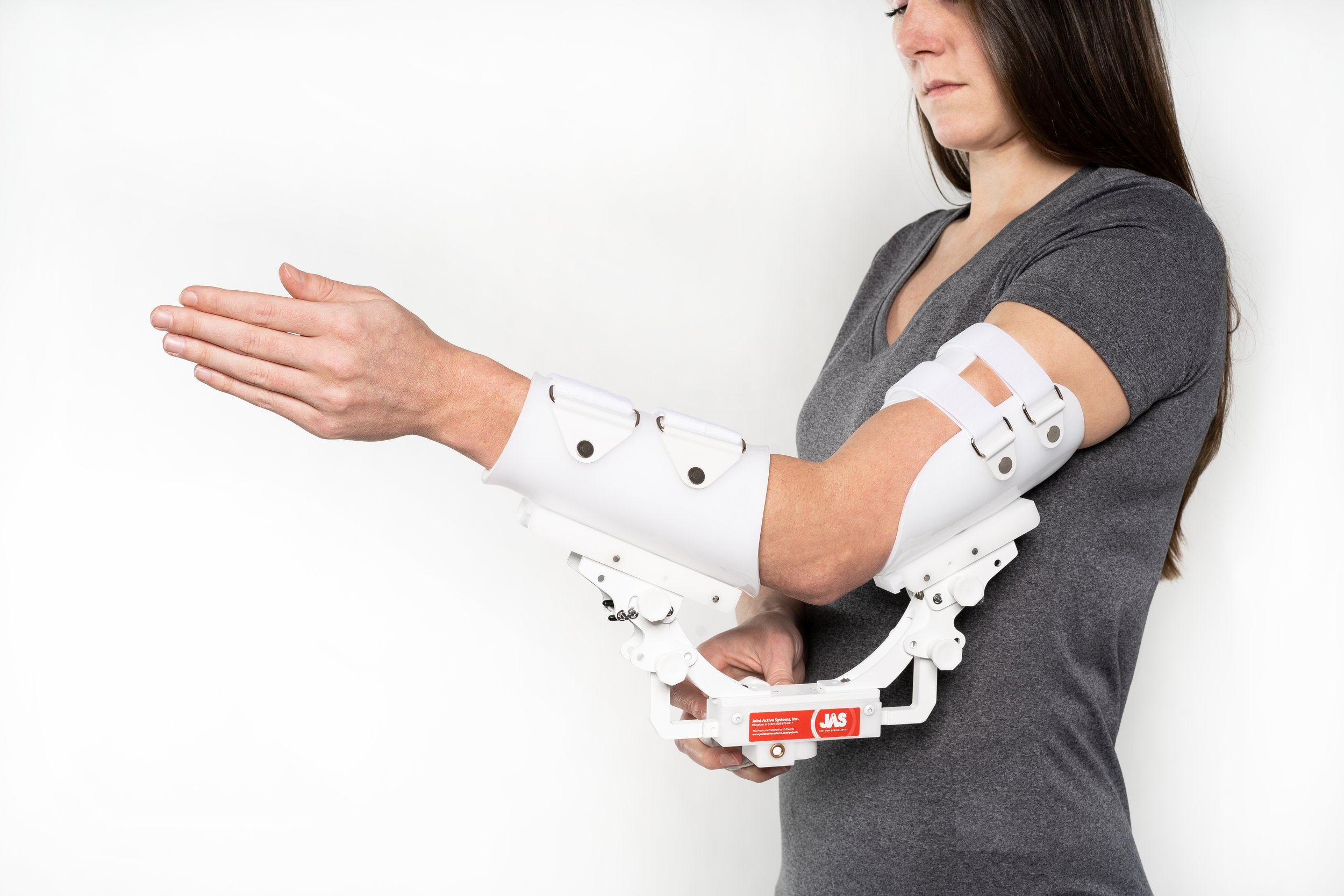Let Your Guard Down with JAS
When joints in the body experience trauma through injury or surgery, the central nervous system will often initiate an involuntary response in the muscles to protect the joints from further injury and promote healing. This response is called muscle guarding.
Muscle guarding is typically triggered by pain in the muscles when they are stretched or stressed to a point that the brain senses injury is about to occur. If this pain is persistent, the guarding response can cause shortening or contracture of the muscles and an associated loss of function.
Joint Active Systems range of motion stretching devices utilize a low load prolonged duration stretch (LLPS) protocol to stretch joint contractures that have developed after trauma or surgery. This protocol emphasizes applying a stretch force intensity that stays well below a level that causes pain. This is a key component of the LLPS protocol to specifically avoid a muscle guarding response in the contracted muscle tissue. With the stretch force kept to a lower intensity level, time and consistency become the key components to progressively stretching the contracted muscle tissue and restoring normal function in the affected joint.

